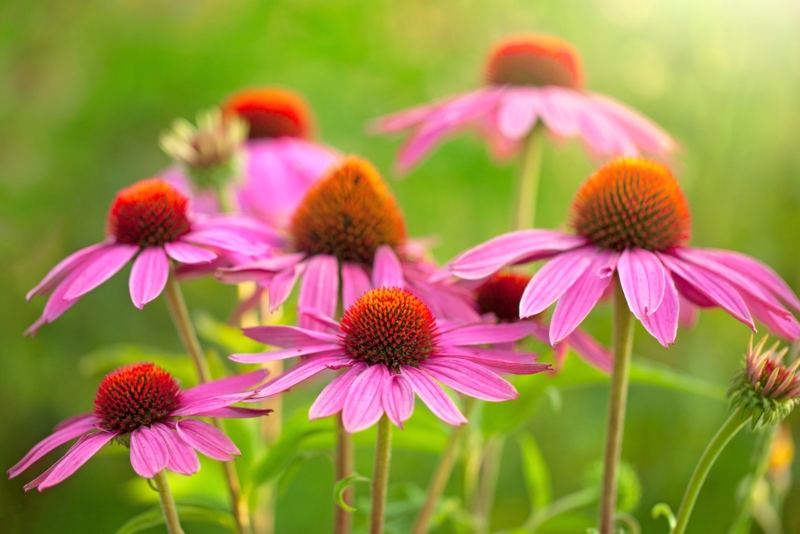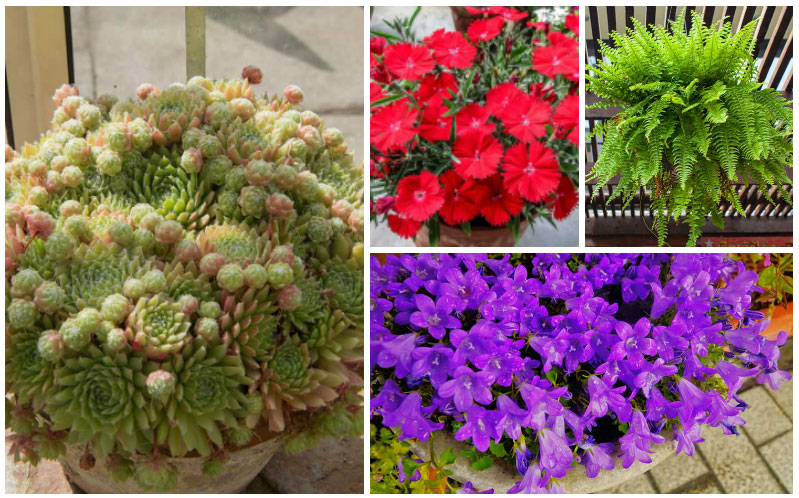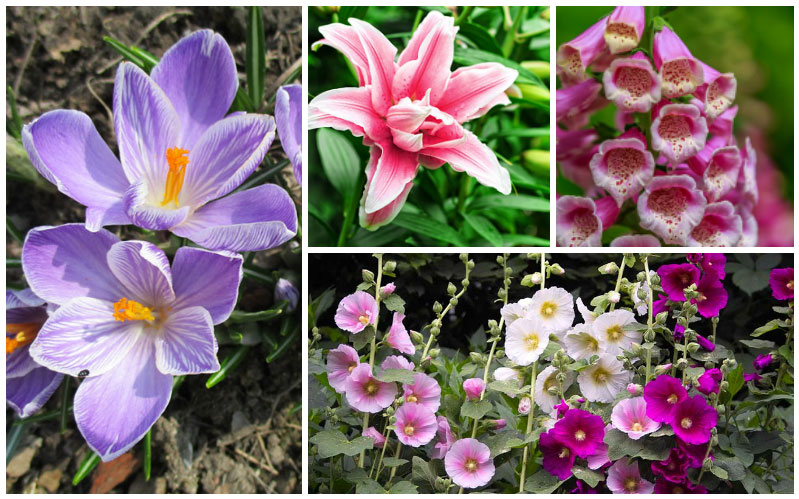
Zone 6 is one of the 13 hardiness zones of the USA. This zone has average cold temperatures from -10°F to 0°F so you should make sure that you’re picking plants that will withstand this temperature range.
Types of Perennials that Grow in Zone 6
Perennials are plants that will bloom year after year. Those growing in zone 6 might tolerate colder or hotter zones as well.
Here are 15 types that you can grow in your zone 6 gardens.
1. Achillea Fanal

This flower, also known as The Beacon, grows shades of bright crimson petals throughout summer. The flowers are easy to care for and are heat, drought, humidity, rabbits, and deer tolerant. They grow in steady clumps that can reach up to 30 inches high. They’re amazing cut flowers.
2. Iris Cloud Ballet

The Iris Cloud Ballet is quite a display with its ruffling light blue petals that are slightly paler towards the center. It has a sweet fragrance and rises above bright-green sword-like foliage. Once this flower is established it will become drought-resistant, but it’s not edible and can cause discomfort when ingested.
3. Lupinus Purple Swirl

With erect spikes of purple and white flowers, this perennial will attract butterflies, hummingbirds, and bees. The flowers are sweetly scented and are tolerant of deer and rabbits. They add height and structure to your beds and cottage garden as long as you keep them in the sun. Deadheading will promote future growth of this plant.
4. Dianthus Fire and Ice

The compact flowers are delightfully scented growing raspberry petals with pink spots and white edges. The flowers rise from short gray-green foliage and bloom from early summer until early fall. They love the sun and will attract bees and butterflies.
5. Fritillaria Meleagris

This perennial grows flowers that bloom from mid to late spring with petals that vary from reddish-brown to purple or white. The flowers grow over green-blue grass-like leaves, preferring full sun and partial shade. Also known as Checkered Lily, this flower fits in rock gardens and other naturalized areas.
6. Monarda Blue Moon

This clump-forming perennial grows compact lavender-blue flowers that can be as big as 2 inches across. They bloom over several weeks from mid to late summer and will attract butterflies, bees, and hummingbirds. The foliage produces a fresh minty scent when crushed. Also known as the Bee Balm, this one will resist powdery mildew.
7. Papaver Orientale Turkish Delight

Growing large crepe-like salmon-pink petals, the Turkish Delight is an outstanding showstopper. This variety is a bit different from other Oriental Poppies as it doesn’t display any black spots at the base of the petals. The bold color is a great addition to your borders as it blooms from late spring to early summer. Once the flower is dry, the dry seed pods can be used in dry flower arrangements.
8. Geum Triflorum

The uniquely-shaped Prairie Smoke flowers are nodding bowl-shaped flowers with elongated seed heads that have silvery pink tails. These silver hairs are easily scattered around because of the wind or a passing animal, dispersing like smoke in the air. These flowers attract butterflies.
9. Echinacea Julia Coneflower

This large scented flower will turn heads with its orange-red petals that surround a copper-toned cone. As the flower grows, the stem turns orange. The Julia Coneflower is named after the Julia Butterfly and can perfectly grow in beds and borders, preferring full sun and partial shade.
10. Anemone Wild Swan

With snowy-white flowers that reach up to 4 inches wide, this plant is perfect to grow in beds and containers. The petals show lavender-blue shades on the bottom and open through the morning. Late in the evening, the flowers close and nod down. They bloom from early spring until the first frost.
11. Campanula Samantha

The upward-facing cup-shaped blue-violet flowers are only 1 inch across. The flowers grow over dense deep green foliage and will rebloom when they’re deadheaded. These low-maintenance perennials are almost disease-free.
12. Aconitum Napellus Monkshood

These flowers are native to Western and Central Europe growing on top of foliage that can reach up to 4 feet high in full sun or partial shade. The flowers look like the hoods monks used to wear in medieval Europe and have beautiful deep-blue purplish petals.
13. Viola Sorbet Lemon Blueberry Swirl

This compact perennial is heat-tolerant, growing small sunny-yellow flowers. The petals have violet edges and are covered by indigo whiskers towards the center. This Viola flower blooms from spring until fall, tolerating the weather way better than larger flowers. It’s edible and can be used in your fresh salads or as a garnish to your delicious dishes.
14. Ajuga Reptans Bronze Beauty

This wonderful spreader grows bronze tinged leaves that contrast beautifully with the blue flowers. This shade lover grows where grass can’t grow and can be used between stepping stones. This perennial is pest-free.
15. Helianthus Happy Days

This dwarf Sunflower grows from an upward mound of dark green leaves from midsummer until early fall. The flower has yellow golden petals surrounding a center of more yellow petals arranged in an anemone form. This is an excellent choice for cut flowers and bouquets. It will also attract lots of hummingbirds, butterflies, and bees when grown in beds and borders.
Perennials grown in zone 6 are usually grown around mid-March and through mid-November. Gardening in zone 6 is a rewarding experience because most plants do very well in this weather. Growing various perennials means that your zone 6 garden will always have an outstanding display of vibrant colors.













